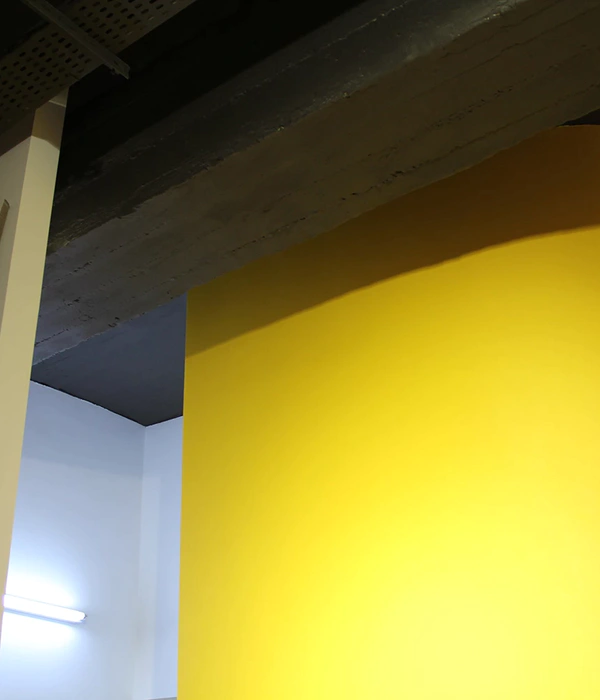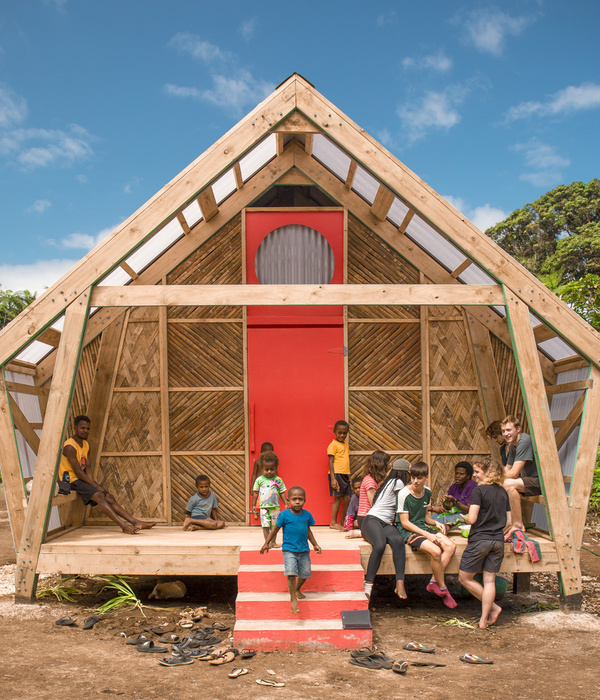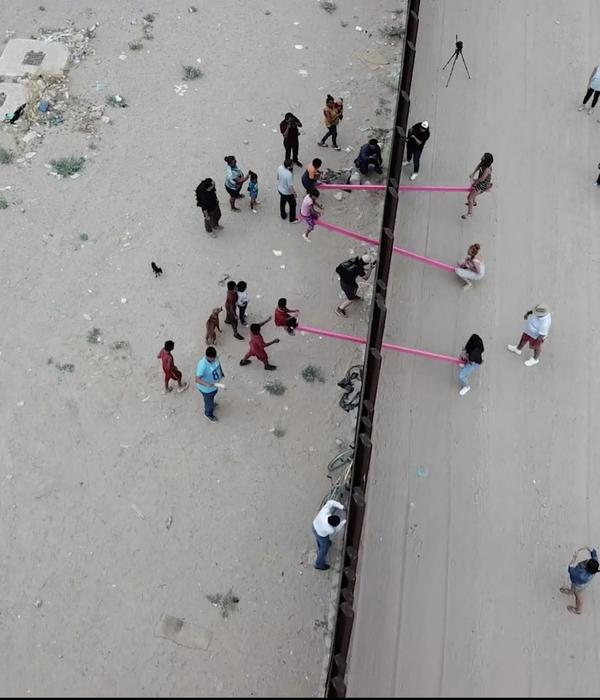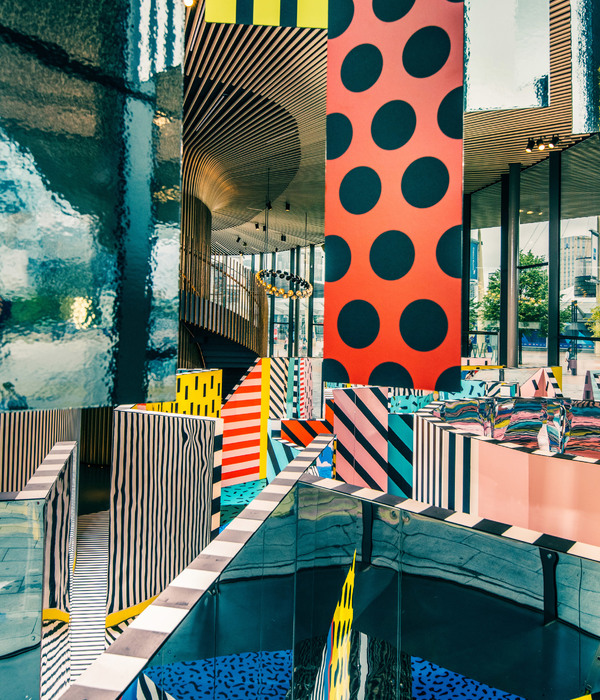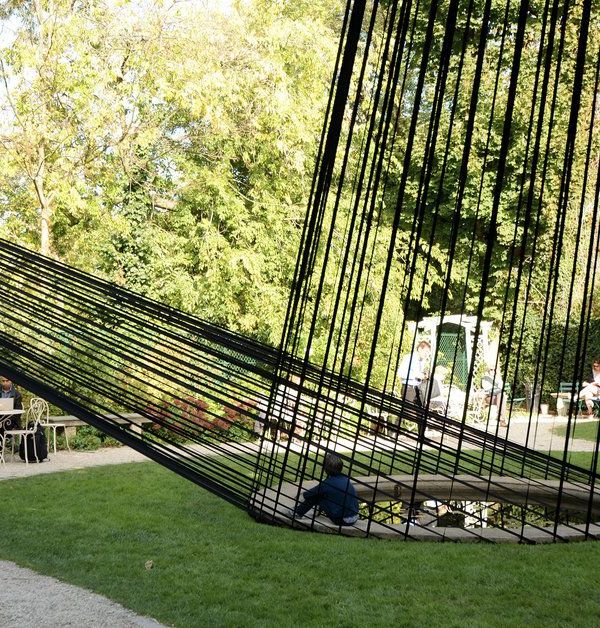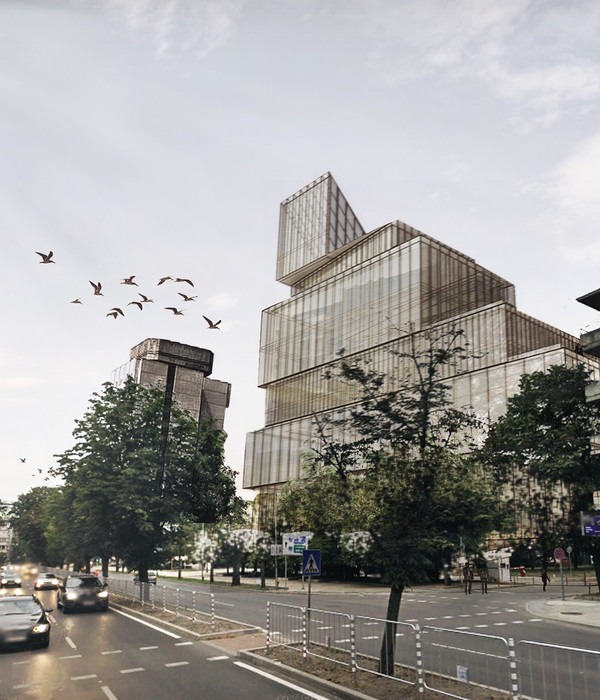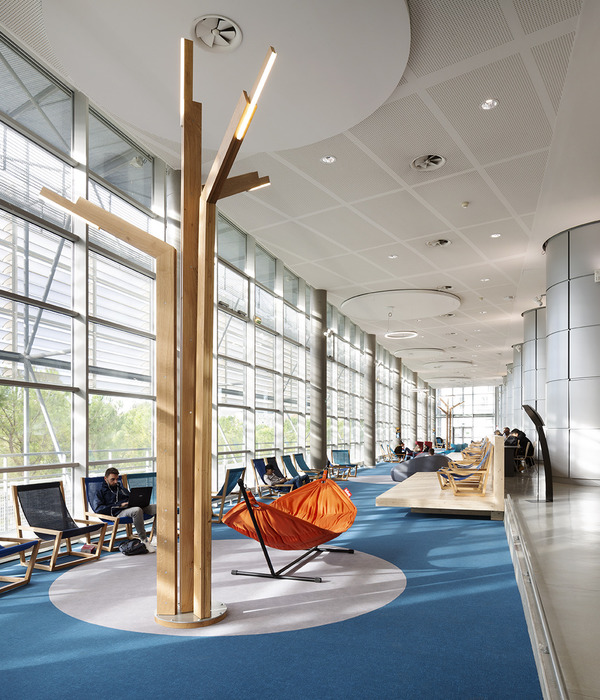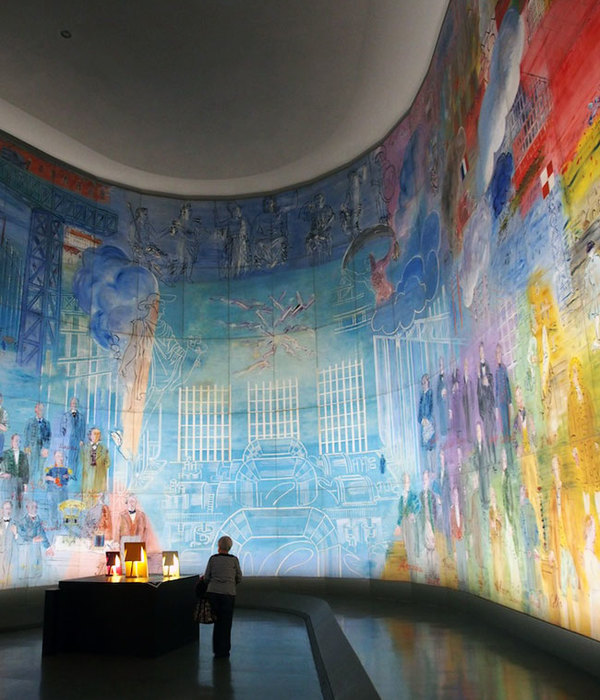“浮灯馆”旨在重塑东亚的木结构建筑,特别是“楼”,即东亚版的体量更大的pavilion。传统的组装工艺和结构系统,如木梁架,在此项目的六个树状柱中重获新生。这些树状结构致敬了矗石楼正立面的六根立柱,矗石楼建于1365年,是该项目所在的韩国晋州市最具代表性的建筑。
‘The Pavilion of Floating Lights’ aims to reinvent East Asian timber architecture, especially ‘-ru’, the East Asian equivalence of a pavilion in bigger scale. Traditional assembling technics and structural systems such as wooden brackets are re-created in six tree-like columns of the project. These tree structures pay homage to six pillars of the front side of Chokseok-ru built in 1365, the most symbolic building in the city of Jinju, Korea where the project is located.
▼远眺建筑,distant view of the building
▼建筑与南江,building and Namgang River
该项目也试图避免使用钉子和粘合剂,以继承原始的木工技艺。然而,为了提高施工效率,利用AR技术将CNC数控加工的复杂胶合板构件组装成树形结构。通过这种方式,“浮灯馆”展示了东亚建筑中被遗忘的工艺在我们这个时代的技术中重生的潜力。
Also, the project is intended to prevent from using nails and adhesives in order to inherit an original carpentry. However, for the better construction productivity, complex plywood members fabricated by a CNC router were assembled to form tree structures by virtue of Augmented Reality. In this way, ‘The Pavilion of Floating Lights’ showcases the potentiality that the forgotten craftsmanship in East Asian architecture can be reborn with the technology in our time.
▼远望树形结构,tree-like structure viewing from distance
▼落地窗后的树形结构,tree-like structure behind the glazing wall
▼室内概览,interior overview
▼木结构构件组装而成的结构继承原始木工技艺,the structure assembled from plywood pieces inherits an original carpentry
▼从室外远望木结构,a distant view of the structure from outside
▼结构细部,details of the structure
此外,该项目提出了“楼”的一种新形态作为晋州市的市民活动平台,晋州市是韩国南部省份最具历史意义的城镇之一。起初,“楼”的定义是一个拥有架空平座的建筑,可供私人使用或用于军事观察。不过该项目将传统 “楼 ”的用途转向了更多的公共方面。该场地朝向南江,这个该市著名历史事件的舞台背景。该项目旨在成为河边的一个标志,特别是为当地著名的浮灯节而设计。
In addition, the project proposes a new type of ‘-ru’ as a civic platform for the city of Jinju, one of the most historical towns in the southern province of Korea. Originally, the definition of ‘-ru’ is an iconic building with elevated floors to have open views for private uses or military observation. However the project converts the traditional purposes ‘-ru’ to more public sides. The site faces the Namgang River which has been a background for notable historical events in the city. The project aims to be an icon alongside the river, in particular, for the Floating Lights Festival which is the well-known local event.
▼朝向南江的市民活动平台,a civic platform facing notable Namgang River
▼建筑立面,building facade
另外,该项目成为一个游客可以体验自然和都市环境的地方。在城市化之前,河边被竹林包裹。受这个失落的场景和城市记忆的启发,树状柱产生了一个内部空间,如同树林下的通道。三面玻璃墙模糊了内外的界限,实现了开放性。最后,树形结构构成了项目的特质,首先是其内部氛围,其次是来自外部的象征性形象。
Furthermore, the project becomes a place where visitors can experience natural and urban environments. Before the city was urbanized, the riverside was surrounded by bamboo forests. Inspired by this lost scene and memory of the city, tree columns generate an interior space like a pathway between forests. Also, glass walls of three sides blur the boundary between inside and outside to realize the idea of openness. Finally, tree structure creates the characteristics of the project, firstly its own interior atmosphere and secondly a symbolic figure from the outside.
▼夜景,night view of the building
▼平面图,plan
▼屋顶平面图,roof plan
▼纵剖面图,longitudinal section
▼横剖面图,cross section
▼横剖面图,cross section
▼构造图,structure detail
Project size:110 m2
Completion date:2022
Building levels:2
Project team:JK-AR
{{item.text_origin}}

